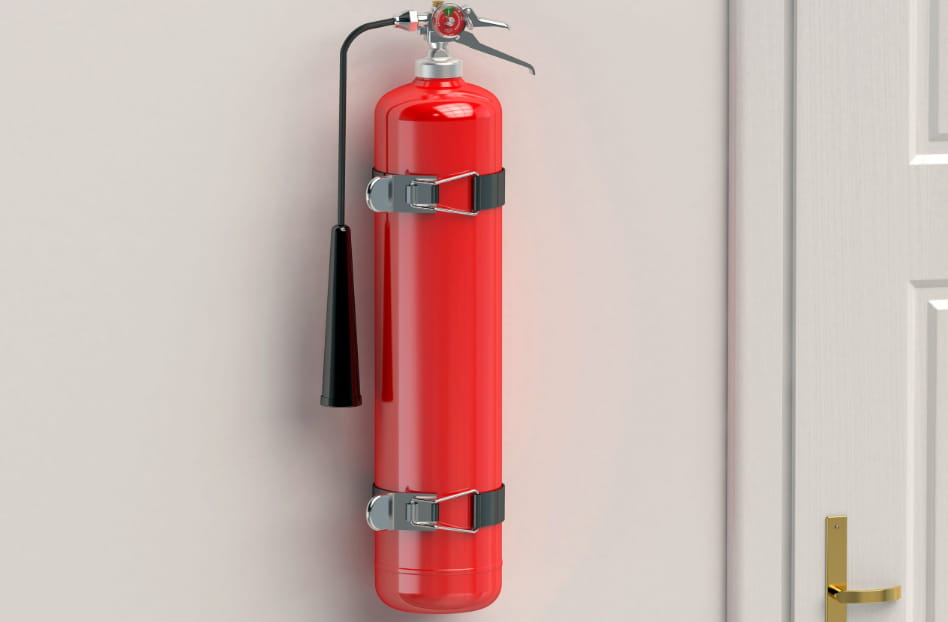Ensuring workplace safety is paramount for any business, regardless of size or industry. Among the various safety measures that should be in place, having a reliable fire extinguisher is crucial. A fire can break out at any time, and the ability to quickly control it can mean the difference between a minor incident and a devastating disaster.
In this guide, we’ll explore the critical role fire suppression devices play in workplace safety, discuss the different types available, and provide tips on how to properly use and maintain them.
Understanding the Different Types of Fire Extinguishers
Fire extinguishers are not one-size-fits-all; they are designed to combat specific types of fires. Understanding the different classes is essential to ensuring your workplace is equipped with the right extinguishers.
-
Class A: Designed for ordinary combustibles like wood, paper, and cloth.
-
Class B: Effective against flammable liquids such as gasoline, oil, and paint.
-
Class C: Used for electrical fires involving equipment, wiring, and appliances.
-
Class D: Specifically for combustible metals like magnesium and aluminium.
-
Class K: Ideal for kitchen fires involving cooking oils and fats.
Having the correct fire suppression device for each potential fire type in your workplace is critical. For instance, a kitchen area would benefit from a Class K extinguisher, while an office might need a Class A and Class C combination.
How to Choose the Right Fire Extinguisher for Your Workplace
Selecting the appropriate fire suppression device involves assessing your workplace’s specific needs. Consider the types of materials used, the nature of your operations, and potential fire hazards.
For example, a manufacturing facility with heavy machinery may require Class D extinguishers, while a restaurant should have several Class K extinguishers in the kitchen. Consulting with a fire safety professional can help ensure you’re making the right choices.
Proper Placement and Accessibility
Strategic Locations for Maximum Safety
Where you place fire extinguishers is just as important as having them. They should be installed in easily accessible locations, particularly in areas where fires are most likely to start.
Common locations include near exits, in kitchens, and areas with heavy electrical equipment. The goal is to ensure that no matter where a fire breaks out, an extinguisher is within reach.
Ensuring Easy Access During Emergencies
During an emergency, every second counts. fire suppression devices must be easily accessible, with no obstacles blocking them.
It’s also crucial to ensure that all employees know where the extinguishers are located and how to access them quickly. Regularly checking that extinguishers remain unblocked and easy to reach is a simple yet vital task in maintaining workplace safety.
Training Employees on Fire Extinguisher Use
The Importance of Regular Fire Safety Drills
Knowing how to use a fire extinguisher is as important as having one. Regular fire safety drills ensure that employees are familiar with the location and operation of fire suppression devices.
These drills should simulate real scenarios, giving employees the confidence to act quickly and effectively in the event of a fire. The more prepared your team is, the safer your workplace will be.
Step-by-Step Guide to Using a Fire Extinguisher (PASS Method)
Using a fire extinguisher is straightforward if you remember the PASS method:
-
Pull the pin to break the seal.
-
Aim the nozzle at the base of the fire.
-
Squeeze the handle to release the extinguishing agent.
-
Sweep the nozzle from side to side at the base of the fire until it is fully extinguished.
Practising this method during drills ensures that employees can use an extinguisher confidently when needed.
Regular Maintenance and Inspection of Fire Extinguishers
Why Regular Inspections Are Crucial
It requires regular inspections to ensure they are in working order. Over time, extinguishers can lose pressure or become damaged, rendering them ineffective. Regular checks should include ensuring the pressure gauge is in the green zone, confirming the pin and seal are intact, and checking for any physical damage or corrosion.
How Often Should Fire Extinguishers Be Serviced?
A certified professional should service fire extinguishers annually to maintain compliance with safety regulations. The extinguisher is thoroughly inspected, tested, and recharged if necessary during this service. Additionally, a more comprehensive internal examination should be conducted every six years to ensure long-term reliability.
Conclusion
Fire suppression devices are an indispensable part of workplace safety, providing a first line of defence against potential fires. By understanding the different types of extinguishers, placing them strategically, training employees on their use, and maintaining them properly, you can ensure your workplace is well-prepared to handle fire emergencies.
Taking these steps not only protects your property but also safeguards the lives of your employees. If you’re looking for more detailed information on selecting and maintaining the right fire extinguisher for your workplace, be sure to visit our dedicated page.
